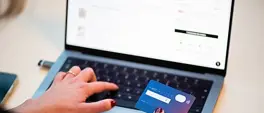Kenya’s banks ‘unaware’ of how to accommodate disabled patrons, research reveals
Palesa Manaleng
15 February 2024 | 10:46Research conducted by various stakeholders revealed a gap in communication in the financial sector for those with disabilities. But Kenya is not the only African country struggling to accommodate disabled customers.
JOHANNESBURG - Money makes the world go around and those who have access to it can actively participate in society.
But how well does the banking sector cater to the needs of people with disabilities?
ALSO READ:
A 2019 United Nations (UN) report cites data that showed persons with disabilities considered 28% of banks in developed countries, and between 8% and 64% of banks in some emerging economies, to be inaccessible.
Eyewitness News spoke to Sightsavers, an international NGO that works with government, businesses, and local organisations in Kenya to prevent avoidable blindness and uphold the rights of people with disabilities.
“People with disabilities experience many barriers to accessing financial services and products. These include barriers in infrastructure, and the physical location of banks and other services, which can be difficult to access with certain impairments,” said Simon Brown, Sightsavers’ senior global technical lead for economic empowerment.
“Communication, information, technology systems and services are also often inaccessible or not tailored to the needs of people with disabilities”, Brown added.
(MIS)COMMUNICATION
Sightsavers recently teamed up with Kenyatta University, the Association of Microfinance Institutions of Kenya, and the United Disabled Persons of Kenya to conduct research in Kenya exploring the challenges people with disabilities faced in accessing formal financial services and products, including banking.
“Our recent research in Kenya has shown that banking and financial institutions’ representatives have acknowledged that they are unaware of how to market and communicate their services and products to people with disabilities,” Brown revealed.
“For example, information provided in small print or not given in braille, or a lack of sign language interpreters available. Often people with disabilities are not adequately informed of the services that are available for them,” said Brown.
The organisation says there is also a lack of policies on disability inclusion, and a lack of awareness or willingness to support them.
“Many of the experiences people had of financial services reported in this study are similar to those faced by people with disabilities throughout Africa, with some national variances.”
POVERTY AND DISCRIMINATION
According to Mastercard's research, a combination of physical constraints in accessing financial institutions and services prevent many persons with disabilities from banking independently.
Mastercard reported that depending on the type of disability, this included being unable to travel to and enter a financial institution, branch, or ATM, not perceiving and understanding what is written on paper or electronic devices, being unable to hear, understand, and communicate with banking service providers, and being unable to access paper or digital content.
“People with disabilities are more likely to live in poverty than those without disabilities due to barriers in society such as discrimination, limited access to education and employment, and lack of inclusion in livelihood and other social programmes. Education and literacy of course limits accessibility to financial inclusion information and navigating through financial services and systems,” Brown said.
Sightsavers said people with disabilities often reported digital channels as a key way for them to access financial services and products, however, much needs to be done to improve accessibility for all.
“People with disabilities – like everyone else – are open to using technology to make their banking experiences more efficient. With the growing use of mobile phones and online banking, this is an opportunity for banks to take positive steps toward financial inclusion for everyone.”
For many bank users with a disability, one way to improve access would be to collect information about their conditions and needs through bank application forms.
This process would inform systemic changes of how services are provided by the institution, and give them a sense of belonging.
“Financial institutions should be more flexible in allowing people with disabilities to opt in and out of ATM cards. Clients with visual impairments should also be provided with additional information and tips on secure ATM usage. ATM machines should be reachable to wheelchair users and have installed screen readers/voice-enabled features and brail/hard button keys to accommodate clients with visual impairments.”
Get the whole picture 💡
Take a look at the topic timeline for all related articles.
















